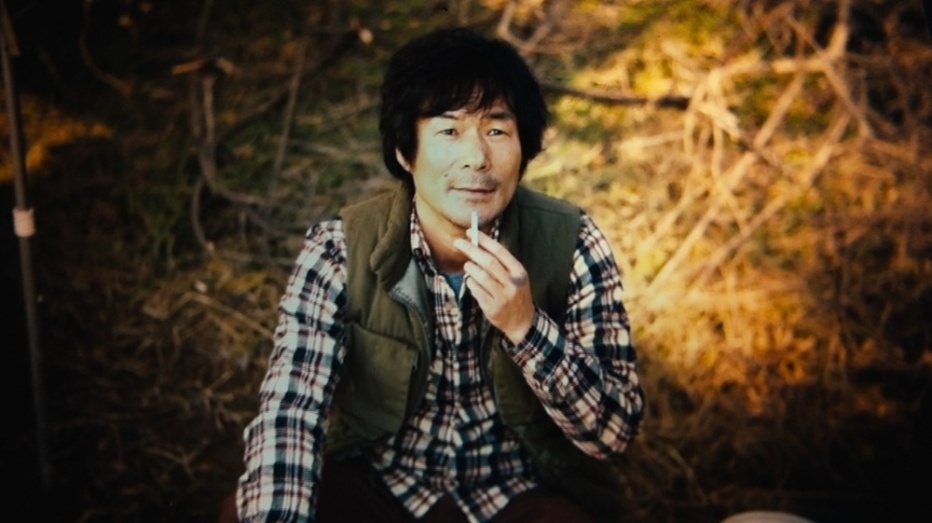Night Fishing (2011) directed by Chan-wook PARK
Night Fishing (Chan-wook PARK, 2011) is a short South Korean drama. How the film is made using an iPhone 4 camera enables us to give a shallow depth of field and draw attention more to what is in the foreground and in the action. The film has a narrative which is split into two halves but is connected and interwoven. Firstly, following an angler traveling to a remote lake to fish. The second depicts a funeral ritual after his drowning. Both sequences are linked by the character of the priestess, who is first caught on one of the fisherman’s lines and appears to be lifeless. The distress of the fisherman, entangled in the line with the body, with a series of high-angle shots where the unconscious woman followed his exact movements as he struggled to free her. The feeling of a night vision lens produces an effect not dissimilar to the black and white. The sequence filmed with black and white connotes that by this time, the angler has died because of the lack of colour and life in the sequence. Also, this may have been used to improve visibility and stylistic. I want to take the influence of this to be used to create meaning and themes. Seeing Park’s use of lighting to illuminate hero objects, such as fishing hooks and the lake to remind us of the peril the angler’s face. The use of rapid movement, from shaking fishing rods during the priestess’ monologue not only reflects the distress of the fisherman but makes the audience feel uncomfortable because it builds to the climax. The narrative twist is that the angler died, this revelation is shocking and intrigues the audience, maintaining the focus. Whilst talking to each other, a match cut is used to transition to the second half. His young daughter and mother are able to speak to them, and he is able to ask them to find his ex-wife, who ran away, so they can live together. It explores the afterlife because of the priestess in the first sequence. The priestess embodies the angler’s daughter by mimicking her voice. Foreshadowing to the second sequence where the priestess takes the voice of the angler in their funeral ritual. The scenes where the man and his young daughter are able to speak are emotionally moving and effective. The character development of the angler tales place within the second sequence, at first, he wants to take his daughter to the afterlife with him but, towards the end understands that he must move on from his life. Transitioning across the long path, cutting through with a knife. At the end, there is a close up onto the priestess who is crying, acting as a final goodbye for the angler. Then cuts to a low angled shot from under the cloth path, this gives the sense of distortion and confusion suggesting the character’s fear for what will happen in the afterlife. The end shot of Night Fishing (PARK, 2011) is a subjective POV shot and presumed to be from the angler’s view. He is back at the lakeside but appears calmer, with the loss of his grieving and moaning relatives to the soft winds and asynchronous cricket chirping giving the ending a bucolic atmosphere.
Overall, I would take influence and inspiration from Night Fishing (PARK,2011) because of the narrative by how the film utilises character development through the angler and the narrative twist that links the two sequences of Night Fishing (PARK,2011). I also like the aesthetic and atmosphere through how the film was made using an iPhone 4 camera and in black and white for a portion of it. Managing to make the audience confused and discomforted.

Comments
Post a Comment